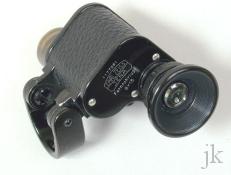Carl Zeiss (unokulare) Fernrohrlupe 6x
Wie die 3x Fernrohrlupe konnte die 6fache Fernrohrlupe – Werte 6x15 (Monokularversion des binokularen Teletur) – nicht nur als Monokular (7,1° Sehfeld oder 12/1000m) verwendet werden, sondern mit einer Reihe von Vorsatzlinsen (1/5, 1/4, 1/3, 1/2, 1 - 10, 12, 14, 16, 19 dpt) auch als Lupe mit Sehentfernungen von 5m bis 5cm oder mit Vorsatzobjektiven (+3 +5 +6 +8 +10 +20) und als Mikroskop auf einem Stativ (es gab verschiedene Versionen davon im Laufe der Jahre). Die Mikroskopvergrößerung berechnet sich aus der Monokularvergrößerung mal der Lupenvergrößerung (also bei 6x mit 30x-Lupe (+20dpt) = 180x Vergrößerung). Siehe hierzu auch Detailinformationen: |
As the 3x Fernrohrlupe the 6x Fernrohrlupe (specifications 6x15 – monocular version of the binocular Teletur) could be used not only as a monocular (f.o.v. 7.1° or 12/1000m), but also as a magnifier or a microscope. As a magnifier the Fernrohrlupe was supplied with several add-on lenses (1/5, 1/4, 1/3, 1/2, 1 - 10, 12, 14, 16, 19 dpt), used in distances s of 5m to 5cm. With some close-up objective lenses (+3 +5 +6 +8 +10 +20) the Fernrohrlupe was mounted on a stand (different versions available through the years) and used as a microscope. The microscope magnification can be calculated by multiplying the monocular's power with the close-up lens power, i.e. 6x with 30x (+20dpt) lens = 180x magnification. The 6x Fermnrohrlupe came with a small wooden box. It contained the add-on lenses and a handle that could be screwed to a joint clamp, the latter also functioning as a finger ring (28mm in diameter). There were differnt wooden cases - some early ones covered with black paper - in different sizes depending on how many close-up lenses they were supposed to contain. Often there was some recessing to store the attachable lamp, as well as a spot for the horseshoe stand adapter (see pics 5 & 6: Manual from Zeiss Med 124/III, p. 4 'Hufeisenfuss nach Prof. Erggelet'). The microscope box had the stand with it. There was also a head band holder for people with low vision or for hands-free inspections.Also see detailed informnation: |
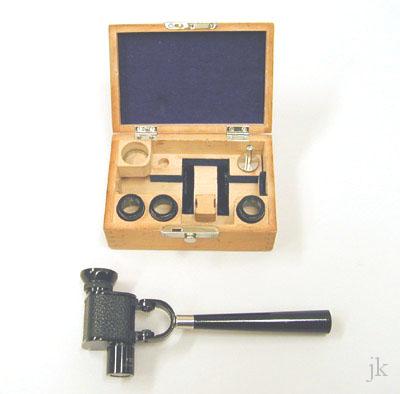
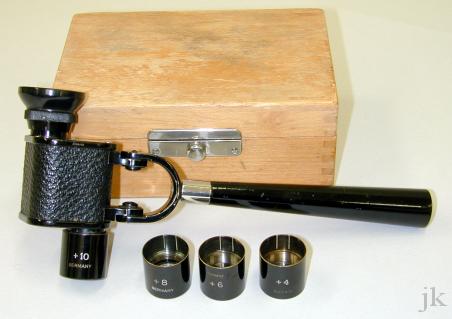
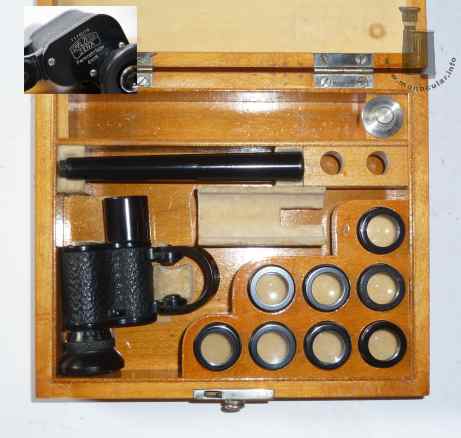
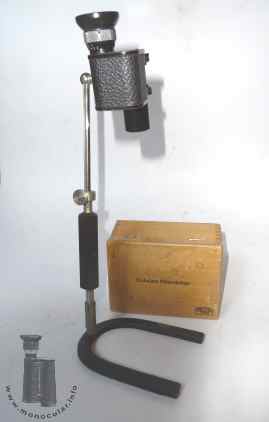
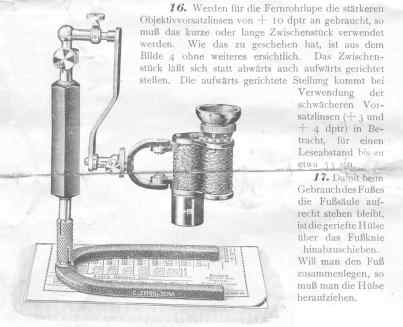
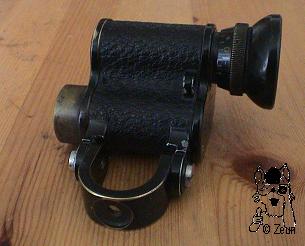
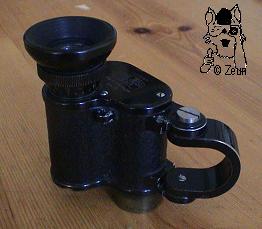
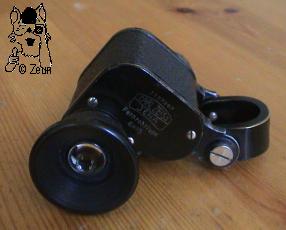
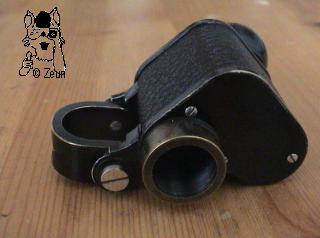
| Die abgebildeteten Fernrohrlupen haben die Seriennummern 1177361 und 1177267. Beide dürften daher ca. von 1922/23 stammen. Ein anderes Exemplar trägt die "Nr. 2079609" am oberen Deckel und stammt somit von ca. 1940. Das Modell mit Nr. 1344316 und Kennzeichnung "Fernrohrlupe 6x15" hat eine kleine Beleuchtungseinheit sowie einem langen Tubus mit Pluslisne, die sich auf die Beleuchtungeinheit als auch auf das Objektiv stecken lässt. Ob es am Objekitv als hochvergrößerndes Mikroskop oder an der Lampe als Lichtbündelung dienen sollte bleibt ungeklärt. |
The Fernrohrlupen shown here have the serial numbers 1177361 and 1177267. Hence, both should date from around 1922/23. Another specimen is marked "Nr. 2079609", thus dating from around 1940. The mdoel with the serial number 1344316 and designation "Fernrohrlupe 6x15" coems with a small illumination unit as well as a long tube with a plus lens. It can be slipped onto both the illumination unit as well as the obejctive frame. It remains uncertain, whether it was intended as a high power microscope lens for the obejctive or whether to bundle the light beams of the bulb light. |
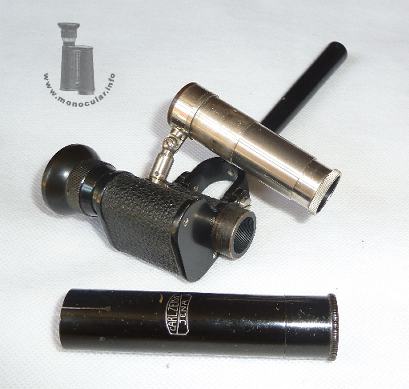
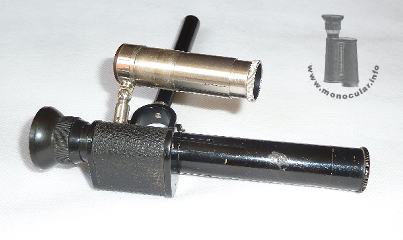
| Außer als Mikroskop fanden die Zeiss Fernrohrlupen auch mit Objektiv-Zusätzen Verwendung für andere wisenschcaftliche oder medizinische Zwecke. Z.B. zum Gebrauch als Ohrenspiegel (Otoskop) wurde eine beleuchteter Objektivaufsatz angeschruabt, und an diesem der auswechselbare Ohrtrichter (fehlt im vorliegenden Exemplar; vgl. Prospektfoto); ein anderes Modell hat ein 90° Aufsteckprisma und diente evtl. für spezielle Beobachtungen in einem wissensdchaftlichen Labor. | Apart from microscopic use, the Zeiss "Fernrohrlupen" were supplied with other objective attachments to be used as scientific or medical isntruments. For isntance, with a illuminated objective attachment with a funnel shaped end (missing on the isntrument shown here) Fernbrohrlupe oculd work as a otoscope (cf. catalogue photo). Another model came with a 90° prism attachment, probably meant for some special observation tasks in a laboratory. |
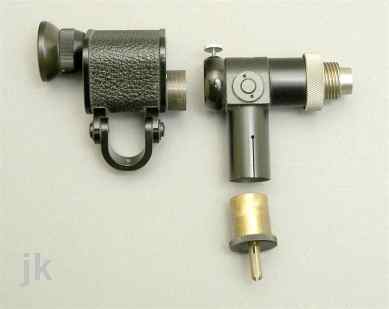
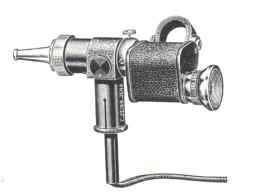
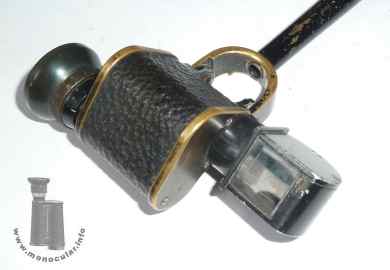
Fotos: Zeun; 1-3, 12: J.Kelly
